A MoMA exhibit traces the parallels between art, design and computing
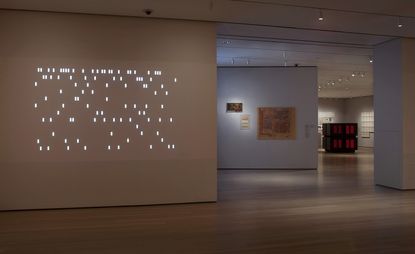
‘Thinking Machines: Art and Design in the Computer Age, 1959-1989’ assembles an eclectic array of artworks and equipment from the collection of the Museum of Modern Art that collectively documents the naissance of the digital age. Such a dramatic technological shift led some to assume that traditional art forms were obsolete, however, if art has one tradition it is that of evolution, which is amply demonstrated in this New York exhibition.
Beryl Korot’s Text and Commentary (1976-77) consists of drawings, loom weavings and five video monitors that document their manufacture. Interested in the historic marginalisation of of women’s creativity into textile production Korot recognised parallels in digital technology, describing the loom as ‘the first computer on the face of the earth.’
Another political perspective is provided by Lee Friedlander, whose series of photographs record the ambivalent expressions of the predominantly female workers engaged in tiresome work on computer terminals in the Midwest, in the mid-1980s.
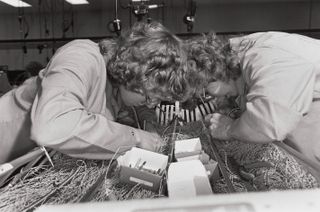
Chippewa Falls, Wisconsin, 1986
Other women in the emerging computer industry appeared to have had more fun. Plotted graph paper drawings by Susan Kare describe, in pixels, a skull and bones, creeping bugs and a leaping frog: early, unrealised designs for computer screen icons. Meanwhile, some artists in the exhibition used actual computers as tools such as Stan Vanderbeek who, working with programmer Ken Knowlton, produced five minutes of pixelated psychedelia with the film Poemfield No. 1 (1967).
The exhibition is punctuated by impressive hardware including a rather ungainly CM-2 Supercomputer produced by Thinking Machines Corporation in 1987 that appears as a cross between a minimalist sculpture by John McCracken and a Knight Industries Two Thousand (the fictional KITT from the concurrent Knight Rider TV series). More elegant machines include Mario Bellini’s Olivetti ‘Programma 101’ desktop computer from 1965 and early Apple models (the Macintosh XL and 128K Home Computers), the latter reminding us of the technology giant’s pioneering designs.

Installation view of ‘Thinking Machines: Art and Design in the Computer Age, 1959-1989’ at the Museum of Modern Art, New York. © MoMA

Installation view of ‘Thinking Machines: Art and Design in the Computer Age, 1959-1989’ at the Museum of Modern Art, New York. © MoMA
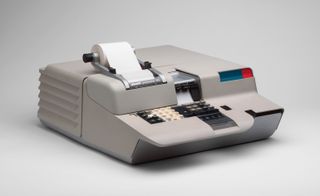
‘Programma 101’ electronic desktop computer, 1965, by Mario Bellini, manufactured by Olivetti & C SpA, Ivrea, Italy.
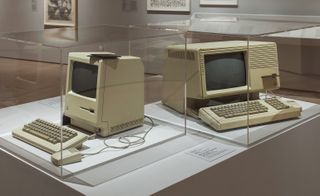
Installation view of ‘Thinking Machines: Art and Design in the Computer Age, 1959-1989’ at the Museum of Modern Art, New York. © MoMA
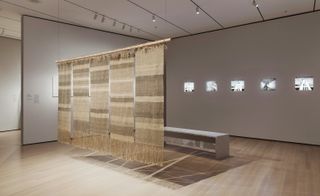
Installation view of ‘Thinking Machines: Art and Design in the Computer Age, 1959-1989’ at the Museum of Modern Art, New York. © MoMA

Still from Poemfield No. 1, 1967, by Stan VanDerBeek, realised with Ken Knowlton. Courtesy of the estate of Stan VanDerBeek and Andrea Rosen Gallery, New York
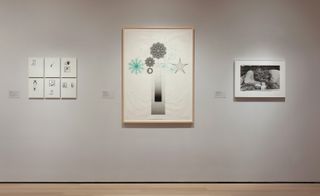
Installation view of ‘Thinking Machines: Art and Design in the Computer Age, 1959-1989’ at the Museum of Modern Art, New York. © MoMA

Boston, Massachusetts, 1985
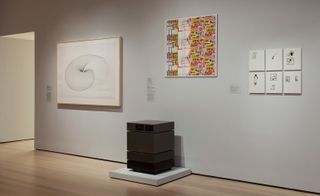
Installation view of ‘Thinking Machines: Art and Design in the Computer Age, 1959-1989’ at the Museum of Modern Art, New York. © MoMA
INFORMATION
‘Thinking Machines: Art and Design in the Computer Age, 1959-1989’ is on view until 8 April. For more information, visit the MoMA website
ADDRESS
MoMA
11 W 53rd Street
New York
Wallpaper* Newsletter
Receive our daily digest of inspiration, escapism and design stories from around the world direct to your inbox
-
 Find yourself at Six Senses Kyoto, the brand's breathtaking Japan debut
Find yourself at Six Senses Kyoto, the brand's breathtaking Japan debutSix Senses Kyoto opens its doors boasting tranquil, luxurious interiors by Blink Design Group
By Danielle Demetriou Published
-
 Shigeru Ban’s mini Paper Log House welcomed at The Glass House
Shigeru Ban’s mini Paper Log House welcomed at The Glass House'Shigeru Ban: The Paper Log House' is shown at The Glass House in New Canaan, USA as the house museum of American architect Philip Johnson plays host to the Japanese architect’s model temporary home concept
By Adrian Madlener Published
-
 Artist Mickalene Thomas wrestles with notions of Black beauty, female empowerment and love
Artist Mickalene Thomas wrestles with notions of Black beauty, female empowerment and love'Mickalene Thomas: All About Love’, a touring exhibition, considers Black female representation
By Hannah Silver Published
-
 The cosmos meets art history in Vivian Greven’s New York exhibition
The cosmos meets art history in Vivian Greven’s New York exhibitionVivian Greven’s ‘When the Sun Hits the Moon’, at Perrotin in New York City, is the artist’s first solo exhibition in the USA
By Emily McDermott Published
-
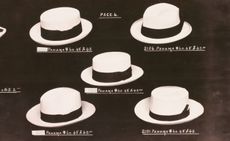 The Met’s ‘The Real Thing: Unpacking Product Photography’ dissects the avant-garde in early advertising
The Met’s ‘The Real Thing: Unpacking Product Photography’ dissects the avant-garde in early advertisingA new exhibition at The Metropolitan Museum of Art in New York explores the role of product photography and advertising in shaping the visual language of modernism
By Zoe Whitfield Published
-
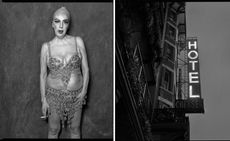 Tony Notarberardino’s Chelsea Hotel Portraits preserve a slice of bygone New York life
Tony Notarberardino’s Chelsea Hotel Portraits preserve a slice of bygone New York life‘Tony Notarberardino: Chelsea Hotel Portraits, 1994-2010’, on show at New York’s ACA Galleries, is the photographer’s ode to the storied hotel he calls home and its eclectic clientele
By Hannah Silver Published
-
 ‘LA Gun Club’: artist Jane Hilton on who’s shooting who
‘LA Gun Club’: artist Jane Hilton on who’s shooting who‘LA Gun Club’, an exhibition by Jane Hilton at New York’s Palo Gallery, explores American gun culture through a study of targets and shooters
By Hannah Silver Published
-
 Detroit Institute of Arts celebrates Black cinema
Detroit Institute of Arts celebrates Black cinema‘Regeneration: Black Cinema 1898-1971’ at the Detroit Institute of Arts (DIA) brings lost or forgotten films, filmmakers and performers to a contemporary audience
By Anne Soward Published
-
 BLUM marks 30 years of Japanese contemporary art in America
BLUM marks 30 years of Japanese contemporary art in AmericaBLUM will take ‘Thirty Years: Written with a Splash of Blood’ to its New York space in September 2024, continuing its celebration of Japanese contemporary art in America
By Timothy Anscombe-Bell Published
-
 Todd Gray’s sculptural photography collages defy dimension, linearity and narrative
Todd Gray’s sculptural photography collages defy dimension, linearity and narrativeIn Todd Gray’s New York exhibition, he revisits his 40-year archive, fragmented into elaborated frames that open doors for new readings
By Osman Can Yerebakan Published
-
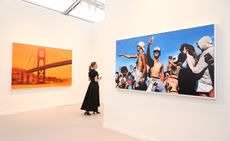 Frieze LA 2024 guide: the art, gossip and buzz
Frieze LA 2024 guide: the art, gossip and buzzOur Frieze LA 2024 guide includes everything you need to know and see in and around the fair
By Renée Reizman Published